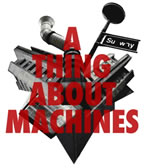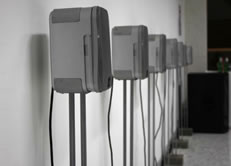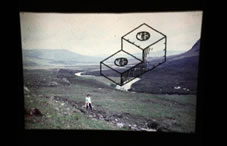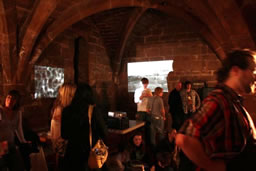[Report]
A Thing About Machines

A Thing About Machines — Brand New Retro
19–21 September 2008
Coventry, UK: various venues
http://www.athingaboutmachines.co.uk

A prison for Mary, Queen of Scots, a theatre for William Shakespeare’s plays and a cameo role in George Eliot’s novel Adam Bede are some of things for which St Mary’s Guildhall in Coventry has been used for during its 800 year long history. Having emerged scarred but standing from the torrent of incendiary bombs which showered the city centre during the Blitz in the Second World War, the medieval building has now entered a relatively quite period in its turbulent history, mainly used as a venue to host civic events and weddings. Up until Friday, 19 September, when more than 100 visitors crowded into its crypt for the launch party of the first A Thing About Machines digital arts and electronica festival in Coventry. The festival, themed Brand New Retro, took Coventry-born BBC Radiophonic Workshop pioneer and creator of the Doctor Who theme, Delia Derbyshire, as its muse. The event aimed to expose people of all ages and backgrounds to genres of music and arts which they may not have encountered before — much as Derbyshire herself did in the 60s when she introduced a generation of music-lovers to electronica through the cult signature tune.

Echoes of Derbyshire’s futuristic musical visions were certainly played out in Stephen Cornford and Matthew Appleby’s Human Separation. Either a technological nightmare or Utopia, depending on the viewpoint of the audience, the piece featured all the traditional elements of a live rock band with one key difference — the instruments were played by machines. A saw buzzed against the strings of a guitar, while a mechanical arm thumped the drum. The resulting discords were cacophonous and yet mesmerising, forcing the audience to question to role of the musician in relation to the instrument. A fusion between a missing scene from Brave New World and a Grimm fairytale, the phrase “let’s do the gig right here” has never had such resonance — this really could be what happens in the deserted warehouse after it has shut up shop for the night.

Simultaneously showing at The Crypt was the art installation Something, Someplace. This series of slides appeared to feature a set of holiday pictures from the 70s, with images of rolling countryside, harbour views and aerial shots taken from hotel windows, all punctuated by T-shirt and anorak-clad family members posing for the camera. What stops the photographs becoming any other boring family album is the addition of a technical drawing — reminiscent of those seen in technical CSE textbooks or 30-year-old car manuals — on every image. So a linear drawing of a tool might appear poised between land and sea, while a family member might appear to be peering worriedly not at a skyline but at a strange 3D shape. The result was almost supernatural in appearance — like the phenomenon of unexplained orbs which appear sporadically on digital photographs, the slides bore witness to the intersection of two worlds which should be destined never to meet. This juxtaposition of seemingly polar opposites made Something, Someplace a compelling and thought-provoking experience.

The “ghost in the machine” theme of both pieces was highlighted to best advantage by the venue. Not only did the acoustics of the crypt allow the sounds to bounce off the walls at the audience but the haunting crumbling walls and medieval archways added a reference point for the exhibitions itself, putting advances of music and art into an historical context.

That was it for the launch party, but on Saturday the fun started again with the Towards Tomorrow event curated by 7inch Cinema, an afternoon and evening of screening and performances devoted to the work and legacy of Derbyshire. I headed to Taylor John’s House, a dingy hideyhole by Coventry Canal, which has hosted some of the best musical events in the West Midlands over the last few months, to see Neville’s First Nintendo. This duo is the city’s first chiptone band, using old-school Nintendos to create bouncy electronica. For anyone picturing nightmarish vision of the terrifying band Dr Spin, which achieved short-lived fame in 1992 with their piss-poor hit Tetris — have no fear. This pair created a new wave post-punk bleepathon, rather than second-rate cheese. Anyone who has been prevented from falling asleep at night due to the sounds of a game boy ricocheting around their brain should go to see this outfit. You’d never sleep again.
Overall, the festival was great — ramshackle in places, but nonetheless a triumphantly exuberant celebration of the collision of art and music, both now and throughout history. Here’s to next year.
Social top